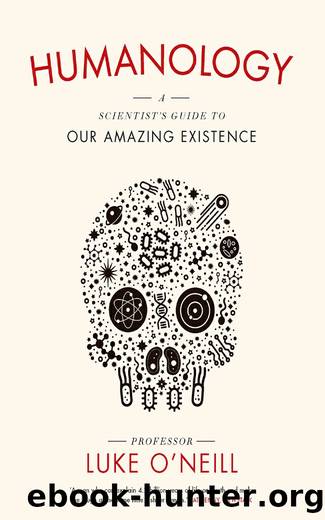Humanology by Luke O’Neill

Author:Luke O’Neill [O’Neill, Luke]
Language: eng
Format: epub
ISBN: 9780717180141
Publisher: Gill
Published: 0101-01-01T00:00:00+00:00
WE TASTE FOOD THROUGH TASTE BUDS ON OUR TONGUES BUT WE ALSO USE OUR SENSE OF SMELL.
Studies have also shown that babies born to mothers who have diets high in fat and sugar are inclined to become obese, but also they are at a higher risk of being addicted to other substances, including alcohol and drugs6. So if you want you can blame your mother for your Krispy Kreme Donuts, Jack Daniels or speed habit (although it must be said the science behind all this is not especially robust). One possible mechanism here is the dopamine rush that we get in our brains when we eat food, which we find pleasurable.
Dopamine is the reward neurotransmitter that is also triggered by alcohol and drugs, and so we may also crave those. This gives rise to the question â can we become addicted to food? In a way we can. Brain scans of teenagers who have eaten chocolate ice cream are revealing. Those who had it as an occasional treat had huge activity in their brains. But those who ate it all the time had a much lower signal, showing that they had become desensitised. This might mean that they will overindulge next time to get the same kick as they got before they developed tolerance.
Psychology again plays a role here. For some unknown reason, if you eat food off a round plate you will think it is sweeter than if you eat it off a square plate7. A copper spoon can make food taste bitter. Strawberry mousse tastes 10 per cent sweeter on a white plate, while coffee tastes less bitter if you serve it in a transparent blue glass. A red soft drink will be rated as being sweeter, while a yellow drink will be rated as more sour. A colourless cola sold under the name âTab Clearâ bombed, even though it had the exact same flavour as the regular version. Itâs not known why this happens, as we taste food on the taste buds on our tongues.
And a lot of taste also involves smell. A good thing to try is to eat some mint leaves while pinching your nose. The mint will taste bland, until you unpinch your nose, after which the sensation of mint rushes to your brain. You are tasting the mint via your taste buds but also through your sense of smell. We only have five types of receptors for taste on our taste buds: salt, sweet, bitter, sour and savoury (also called umami). But our noses have thousands of receptors for what we smell, so there is much more diversity there. We mainly âtasteâ melons and pineapples from our sense of smell.
As we get older, our sense of smell starts to fail, which is one reason why older people will complain that food has no flavour. And one place where all our senses of taste and smell are compromised is in an aeroplane8. The senses of taste and smell are the first things to go at 30,000 feet.
Download
This site does not store any files on its server. We only index and link to content provided by other sites. Please contact the content providers to delete copyright contents if any and email us, we'll remove relevant links or contents immediately.
Sapiens: A Brief History of Humankind by Yuval Noah Harari(14321)
The Tidewater Tales by John Barth(12626)
Mastermind: How to Think Like Sherlock Holmes by Maria Konnikova(7279)
Do No Harm Stories of Life, Death and Brain Surgery by Henry Marsh(6906)
The Thirst by Nesbo Jo(6881)
Why We Sleep: Unlocking the Power of Sleep and Dreams by Matthew Walker(6657)
Life 3.0: Being Human in the Age of Artificial Intelligence by Tegmark Max(5516)
Sapiens by Yuval Noah Harari(5325)
The Longevity Diet by Valter Longo(5042)
The Body: A Guide for Occupants by Bill Bryson(5030)
The Rules Do Not Apply by Ariel Levy(4910)
The Immortal Life of Henrietta Lacks by Rebecca Skloot(4550)
Animal Frequency by Melissa Alvarez(4428)
Why We Sleep by Matthew Walker(4394)
The Hacking of the American Mind by Robert H. Lustig(4339)
Yoga Anatomy by Kaminoff Leslie(4333)
All Creatures Great and Small by James Herriot(4271)
Double Down (Diary of a Wimpy Kid Book 11) by Jeff Kinney(4242)
Embedded Programming with Modern C++ Cookbook by Igor Viarheichyk(4141)
